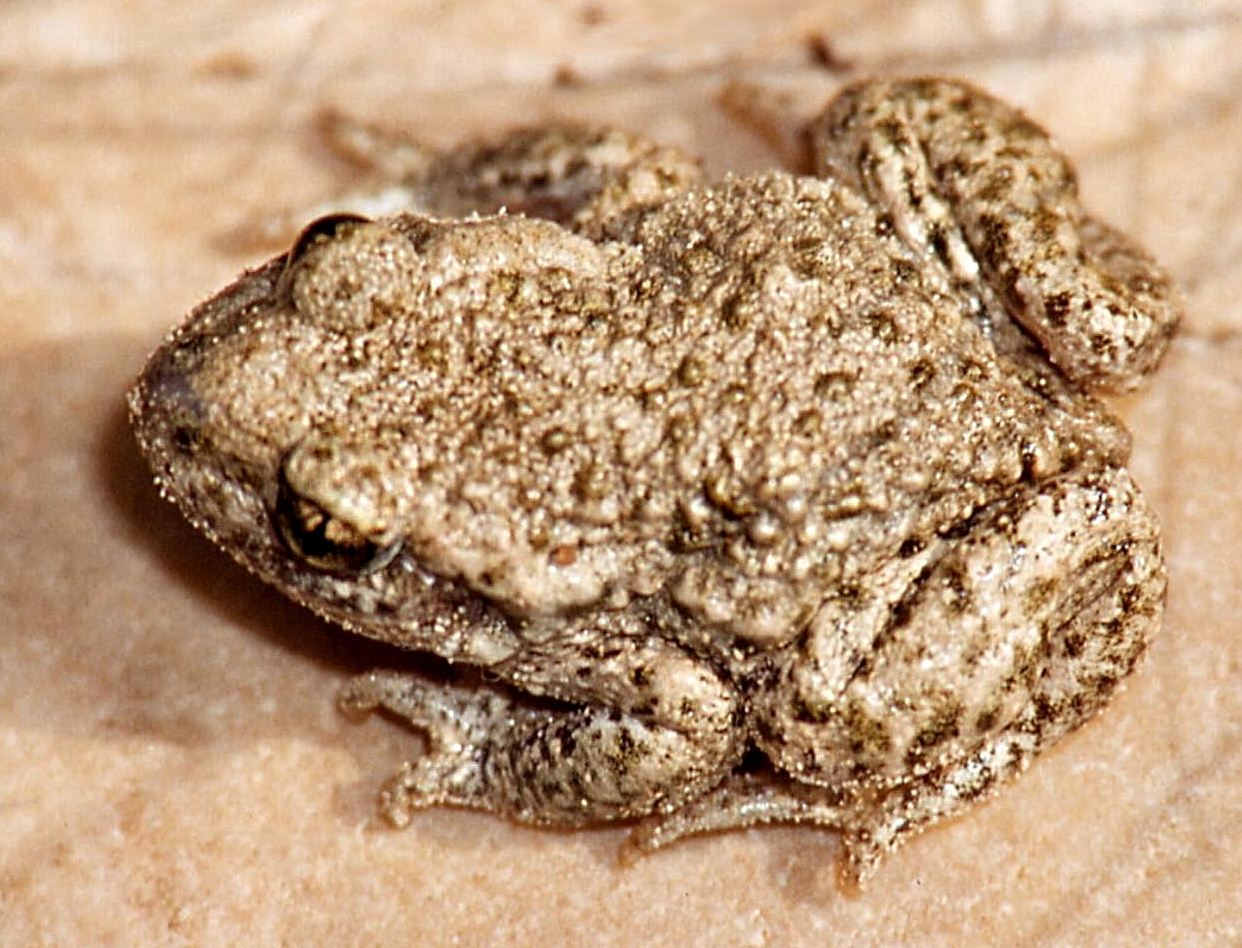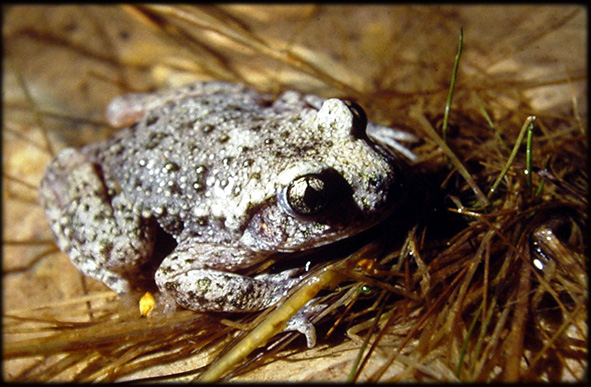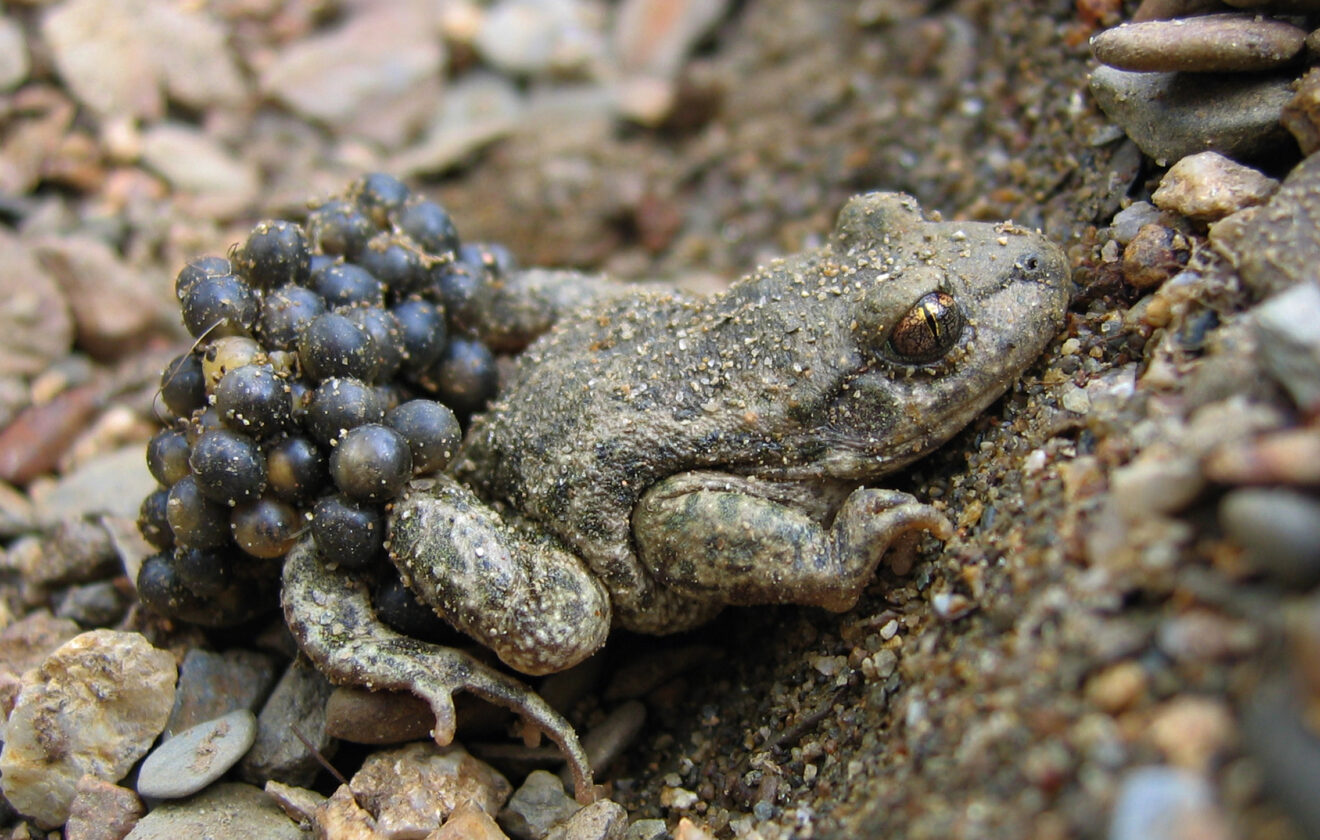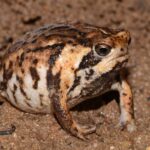- Introduction: Meet Alytes almogavarii, Nature’s Quiet Guardian
- Taxonomy and Classification: Where Alytes almogavarii Fits in Nature’s Tree of Life
- Natural Habitat: A Symphony Beneath Mediterranean Woodlands
- Physical Characteristics: Unassuming Elegance in Camouflage
- Behavior and Life Cycle: The Tenderness of a Devoted Father
- Ecological Role: Guardians of Woodland Micro-worlds
- Threats and Conservation Status: Quietly Fighting For Survival
- Cultural and Scientific Significance: A Living Testimony of Catalonia’s Rich Heritage
- Conclusion: Embracing Alytes almogavarii, a Gift Worth Protecting
Introduction: Meet Alytes almogavarii, Nature’s Quiet Guardian#
Tucked away amidst the gentle, wooded hills of northeastern Spain’s Catalonia region lives a small amphibian whose subtle croaks echo quietly beneath the stars. The Midwife frog, Alytes almogavarii, might seem unassuming at first glance—yet, within its humble simplicity lies an incredible tale of survival, tenderness, and ecological importance. Officially described in recent decades, this shy protagonist has both puzzle and inspire scientists, conservationists, and nature lovers alike.
Named after the famed medieval Catalan warriors—the Almogavars—this modest frog has a surprising strength and determination. While its cousins populate broad ranges across Europe, Alytes almogavarii’s story unfolds in a narrower, more delicate balance—a compelling narrative that invites the curious observer into its remarkable world.
Taxonomy and Classification: Where Alytes almogavarii Fits in Nature’s Tree of Life#
The Alytes almogavarii belongs to the family Alytidae, within the order Anura (frogs and toads). Its genus, Alytes—commonly called midwife frogs—includes several species recognized for their fascinating reproductive behavior. Close relatives like Alytes obstetricans, the common midwife frog, share captivating traits yet occupy broader European distributions.
Recognized and scientifically described only in recent times (Donaire-Barroso & Bogaerts, 2003), Alytes almogavarii holds a unique place within the regional biodiversity of northeastern Iberia. Distinct morphological and genetic traits set it apart, prompting essential research into its ecological niche and evolutionary history—a conservation puzzle that biologists passionately strive to piece together.
Natural Habitat: A Symphony Beneath Mediterranean Woodlands#
In the lush mountainous landscapes of Catalonia, amidst evergreen holm oak woodlands and meandering streams, the Alytes almogavarii finds refuge. The region’s mild Mediterranean climate, punctuated with rainy autumns and temperate winters, sets the perfect stage for this delicate amphibian. Peaceful woodland glens, rocky ravines lush with mosses, and shaded riverbanks define its home.
Thriving in habitats that blend rocky substratum with abundant moss cover and humidity, the midwife frog favors secluded hollows near freshwater bodies. These delicate ecosystems—quiet, untouched by significant human disturbance—become nurseries for generations. Amidst this setting, one can occasionally hear their melodic, bell-like calls resonating gently during nighttime showers, blending harmoniously with the whispering Mediterranean breeze.
Physical Characteristics: Unassuming Elegance in Camouflage#
First impressions of Alytes almogavarii might present an unassuming figure. Adults typically measure just around 3 to 4 centimeters long, their bodies rounded yet elegant, imbued with subtle earth tones—mostly soft grays, beige, and olive hues. Their skin, speckled delicately with darker markings and occasional flecks of ochre, lends a perfect camouflage amidst leaf litter and mossy rocks.
Their bright, expressive eyes gleam brilliantly when illuminated by a torchlight survey at night, revealing an alertness matched only by their skittish demeanor. Unlike frogs adapted for leaping swiftly, Alytes almogavarii exhibits shorter limbs and a smoother, less agile mode of movement, relying instead on stealth and mimicry to evade detection by potential threats.
Behavior and Life Cycle: The Tenderness of a Devoted Father#
A distinct tenderness defines the Alytes genus, particularly notable in Alytes almogavarii. These midwife frogs earned their name from the males’ unusual parental behavior—lovingly carrying strings of fertilized eggs wrapped meticulously around their hind legs. In a display rarely seen in nature, the male tends these precious eggs, safeguarding them from dehydration, predation, and fungal threats.
After the female lays eggs and transfers them to the vigilant male, a painstaking incubation period ensues. The male typically seeks refuge in damp, sheltered habitats, occasionally dipping his egg bundle into water to keep it hydrated. Upon sensing impending hatching—usually a few weeks after laying—the male journeys purposefully to nearby water bodies, releasing newborn tadpoles into pools or streams, where the young begin their independent journey into adulthood.
When not protecting eggs, Alytes almogavarii spends its nocturnal hours foraging stealthily across leaf litter and damp moss in search of insects, spiders, and other small invertebrate prey. Their modest stature belies their vital role as voracious predators, balancing populations of small invertebrates in their habitats.
Ecological Role: Guardians of Woodland Micro-worlds#
Alytes almogavarii is much more than an engaging curiosity—it is a subtle yet crucial component of local ecosystems. As predators of insects, spiders, mollusks, and other small invertebrates, they regulate these populations effectively. By maintaining this delicate biological balance, these frogs indirectly enhance plant health, soil quality, and overall ecosystem resilience.
Simultaneously, these frogs themselves provide a critical food source to various native predators—such as birds of prey, snakes, and small carnivorous mammals like weasels and martens. Their sensitive, porous skin and strict environmental requirements also mean that they serve as biological indicators, reflecting overall ecosystem health and alerting us about degradation or pollution.
Threats and Conservation Status: Quietly Fighting For Survival#
Despite their essential ecological roles, Alytes almogavarii populations face multiple threats, primarily stemming from anthropogenic pressures. Habitat fragmentation due to urban expansion, road building, and logging activities increasingly isolate local populations, reducing genetic diversity and resilience. Additionally, the pollution of freshwater sources and climate change patterns—increasing drought intensity and shifting rainy seasons—pose severe threats to their already fragile reproductive cycle.
The fungus Batrachochytrium dendrobatidis—responsible for global amphibian declines—is also an alarming concern. Conservation biologists, researchers, and local communities now closely monitor Alytes almogavarii. Although not yet officially assessed by IUCN due to its relatively recent scientific documentation, preliminary regional reports highlight the species’ vulnerability, underscoring the urgency to proactively conserve their habitats.
Conservation strategies increasingly focus on habitat preservation, ecological connectivity between groups, and public awareness campaigns emphasizing the amphibian’s critical ecological role. Education is paramount; inspiring local stewardship and understanding can safeguard this quiet guardian of Catalonia’s wild heritage.
Cultural and Scientific Significance: A Living Testimony of Catalonia’s Rich Heritage#
The cultural resonance of Alytes almogavarii stretches beyond mere biological curiosity. Named after the Almogavar warriors—brave, resilient medieval fighters who once defended the lands it inhabits—this species embodies the Catalan spirit of resilience, adaptability, and quiet strength.
Scientifically, Alytes almogavarii provides a crucial window into evolutionary ecology and amphibian reproductive behaviors. Its distinctive parental care strategies and sensitivity to climate change make it an invaluable research model, offering countless insights into conservation biology and ecosystem management strategies.
Conclusion: Embracing Alytes almogavarii, a Gift Worth Protecting#
Beneath the starlit canopy of Catalonia’s woods, Alytes almogavarii quietly perseveres—embodying resilience, beauty, and ecological purpose. Its gentle existence and profound ecological role remind us vividly how delicate, complex, and interconnected our natural world truly is.
The story of Alytes almogavarii is ongoing, and our awareness, appreciation, and active conservation efforts will directly shape the ending. Here we find not only understanding but responsibility—a gift and a mission to protect this captivating amphibian’s future. As nature lovers, students, and supporters of conservation, let us champion the preservation of habitats, encourage responsible ecological stewardship, and share the fascinating biology of Alytes almogavarii widely, preserving its unique legacy for countless generations to come.


















